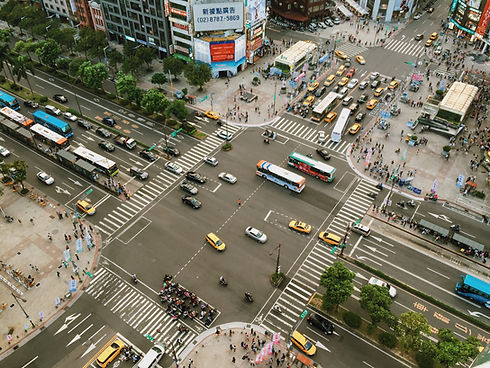
OUTDOOR
Equipment is often located outside the building envelope on the ground or roof. Many municipalities have noise ordinances that include property line noise limits often varying for daytime and nighttime. Understanding distance and barrier noise attenuation allows for the determination on whether any equipment noise attenuation is required.
CONSIDERATIONS
POINT VS LINE SOURCE
Most sound sources can be classified as either a point or a line source. Point source examples include a single exhaust fan or condensing unit. Line source examples include traffic noise along a highway or multiple similar units. Distance attenuation is estimated for each source as follows:
Point = -6dB for every doubling of distance from source
Line = -3dB for every doubling of distance from source
To summarize, line sources experience less attenuation with distance because the multiple point sources that create the line source reinforce each other. Also remember the above attenuation trends assume that the source is not near any obstructions or reflective surfaces!


URBAN VS RURAL
Urban environments have more acoustically reflective surfaces and as a result less sound attenuation occurs. The directivity or amplification factor (often referred to as "Q") describes how the source sound spreads and varies between 1 (sphere), 2 (hemisphere w/ 1 reflecting surface), 4 (2 reflecting surfaces), and 8 (3 reflecting surfaces). If you're wondering, trees do not provide much noise attenuation. Specifically, dense plantings of trees and shrubs at least 100 ft deep provide 7 to 11 dB of sound attenuation from 125 to 8000Hz. However, because attenuation from trees is mainly due to branches and leaves, sound energy near the ground will not be significantly reduces, and deciduous trees will provide almost no attenuation during the months when their leaves have fallen (Egan, M. David. Architectural Acoustics, pg 263).
